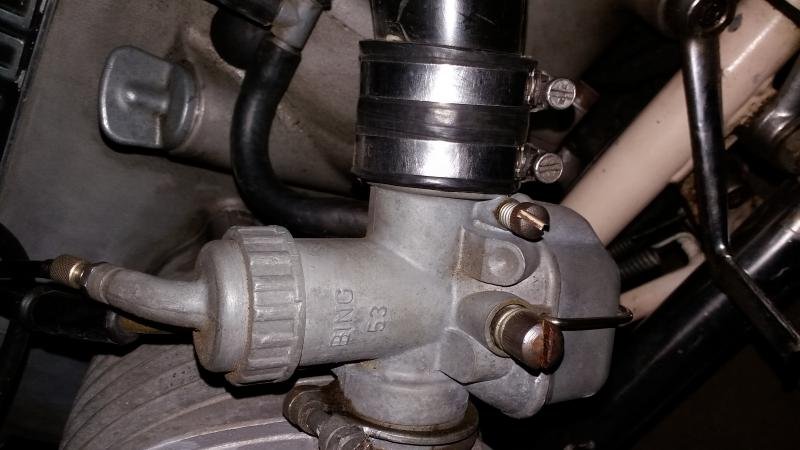wasserwolf
New member
Ok Guys, I need the benefit of some members with air head experience with respect to starting my R60/6. I have owned this for a year and it is my first airhead. I have nothing to compare my starting routine with and would like some experienced guys to chime in.
History First : Bike has new pistons/refurbished heads/rebuilt carbs. Runs great after it warms up.
My starting procedure:
Open the fuel lines, push down on the carb tickler, crack the throttle a tiny bit, hit the starter 6-8 times (with 30-40sec rests in between) until the engine catches. It starts with a very weak sounding thump/thump. During this initial period, the bike shakes. It takes about 5-8 minutes of warming up before I can apply any throttle and raise the RPM over idle. I close the tickler at about 3 minutes after it starts. The colder the morning temp, the longer it takes for the engine to catch. When I can finally twist the throttle and raise the RPM, I can pull away and begin to ride. I want to know if my starting ritual is normal for an old air head or do I have something not set quite right.
Thanks for any comments.
History First : Bike has new pistons/refurbished heads/rebuilt carbs. Runs great after it warms up.
My starting procedure:
Open the fuel lines, push down on the carb tickler, crack the throttle a tiny bit, hit the starter 6-8 times (with 30-40sec rests in between) until the engine catches. It starts with a very weak sounding thump/thump. During this initial period, the bike shakes. It takes about 5-8 minutes of warming up before I can apply any throttle and raise the RPM over idle. I close the tickler at about 3 minutes after it starts. The colder the morning temp, the longer it takes for the engine to catch. When I can finally twist the throttle and raise the RPM, I can pull away and begin to ride. I want to know if my starting ritual is normal for an old air head or do I have something not set quite right.
Thanks for any comments.



